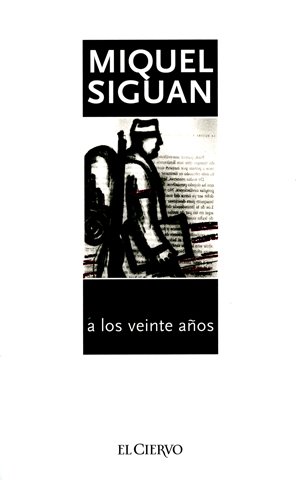
(Photo: courtesy of Dani Chicano(Wikimedia Commons-http://commons.wikimedia.org/wiki/File:Claustre_de_Palam%C3%B3s_%2807%29.JPG#filehistory)
(Please see the end of this article for summary in English)
スペインのEl País紙が、6月5日付けの『プールサイドのロマネスク回廊』という記事で、「12世紀の作と推定されるロマネスク回廊が、カタルーニャ州Palamósのある邸宅の庭で ''再発見'' されたこと。その柱頭の形や柱頭彫刻の題材は、スペイン・ロマネスクを代表するSanto Domingo de Silos修道院の回廊を思わせる珍しいものであるが、これまでその存在が公式の記録から洩れていた未知の作品で、50年くらい前にPalamósにもたらされたものである」と写真入りで大きく報じたため、大変な反響を呼び起こしました。
バルセローナの北東120キロ、Costa Bravaの海岸に面したPalamósは昔から避暑地として有名ですが、町の近くあるMas del Vent(風の館) の通称で知られる豪邸の庭に、12世紀の作とされる回廊が存在するらしいという噂は、スペイン・ロマネスク美術愛好家の間で昨年あたりから話題にのぼっていました。実はこの話の発端は、一昨年の夏ジローナ(Girona)大学のGerardo Boto教授(中世美術史)が、偶然フランスのデザイン雑誌AD誌上で、PalamósのMas del Ventの写真を偶然見かけたことに始まっています。
邸宅はスイス在住ドイツ人の富豪Curt Engelhorn氏が遺産相続したもので、現在は不動産業者Burgasol社が管理する高級リゾートになっています。Boto教授はAD誌に掲載された写真とGoogle衛星地図などから推定して、Mas del Ventの庭にあるのは大規模なロマネスク回廊の公算が大との結論を得て、Burgasol社経由で立ち入り調査の許可を再三にわたり要請しましたがすべて黙殺され、またスペイン・ロマネスク愛好者の会(Amigos del Románico)もBoto教授に呼応して、カタルーニャ州政府など関係機関に立ち入り調査の実施を働きかけたものの、なんら進展のないまま一年以上が過ぎていました。
しかし6月5日付けEl País紙の記事に続いて、各地の新聞社やテレビ局が一斉にこのロマネスク回廊の「再発見」を全国向けニュースとして取り上げ始め、また州政府も法的手段に訴えても立ち入り調査を実施するとの姿勢を示したことから、急遽6月7日にカタルーニャ州政府の文化財専門家による調査と、翌6月8日には報道関係者の立ち入りが実現したものです。
(El País紙カメラマンが撮影した回廊の写真は、下記のウェッブサイトを参照)
( http://cultura.elpais.com/cultura/2012/06/08/album/1339156713_181085.html#1339156713_181085_1339157114 )
報道関係者とともに現場を訪れたBoto教授は、「州政府の文化財担当官による正式な鑑定結果を待ちたい」と慎重な発言をしていますが、回廊はロマネスク時代の作品にほぼ間違いないこと、そして出所はたぶんスペイン中央部の修道院であろう、との確信を深めたようです。
運搬にはおそらく何十台ものトラックを要したに違いない回廊が、1950年代の末ころマドリッドから地中海に面したPalamósの邸宅に移され、その庭を飾ることになった背景には、こんな歴史があります。
1931年マドリッドの古美術商Ignacio Martinezが、出所不明の解体された状態の回廊一式を買い付け、当時はまだマドリッド郊外だったCiudad Linealに土地を確保して、数年がかりで組み立てたうえ500万ペセタ(当時の換算レートで70万ドルくらい ?)で売りに出しました。たぶん米国の金持ちを買い手に想定してのことでしょうが、米国の新聞王として有名なWilliam Randolph Hearstが1925年にSegoviaの修道院を4万ドル(28万ペセタ)でそっくり買い上げた、という話に比べるとかなりの高値をつけたわけですが、Martinezにはこの回廊の価値がよく分かっていた、と見るべきかも知れません。
ただし、あいにく時代はスペイン内戦(1936-1939年)から第二次世界大戦(1939-1945年)と戦乱続きの世情不安の時期にあたり、値段を下げても買い手は現れず、結局1958年になって Hans Engelhornが100万ペセタで買いとり、マドリッドでいちど解体のうえPalamósまで運び邸宅の庭で再び組み立てた、というのがこれまでに判明している経緯です。
土台からの高さが3米にも達する、この巨大な回廊の出所はいったいどこなのか。Segovia県のGumiel de IzánにあったSan Pedro修道院ではないか、という見方が有力のようですが、そのほかにも数ヶ所候補に上がっている出所があり、これからBoto教授はじめ多数の研究者がこの回廊のルーツ探しに取り組むなかで、徐々に色々なことが判明してくるのものと思われます。
なおBoto教授のみならずこのPalamósの回廊を目にした人たちの多くが、柱頭の形や彫刻の題材などにSanto Domingo de Silos修道院の回廊に通じるものがあると指摘しています。Silos修道院の回廊は11-12世紀の柱頭彫刻や石彫りパネルの傑作で埋め尽くされている、誠に貴重なスペインの文化遺産ですが、SilosのMaestroと呼ばれる名工たちの作品はこれまでほかには見当たらないとされてきました。Palamósの回廊もMaestroの作ではなく、たぶんSilosの作品から学んだ工匠の手になるものでしょうが、それでもたいへん重要な発見だと思います。
保存状態もまずまずのようですし、Engelhorn氏は「政府が回廊を文化財に指定し、公開義務が生じればそれに従うことになんら異存はない」と発言しているので、Palamósの回廊が一般公開される可能性は充分あり得ると大いに期待している次第です。
なおSilos修道院については、Blog記事『サンティアゴ巡礼路のロマネスク教会(4)』(2010年12月21日付け)をご参照ください。
( http://surdepirineos.blogspot.ca/2010_12_01_archive.html )
(Summary of the article)
The Spanish newspaper El País reported on June 5, 2012 about rediscovery of a hidden gem of Spanish Romanesque cloister in Palamós, a resort town located at 120 km North East of Barcelona.
''Are there still unknown artistic gems in Spain, even those of the twelfth century? Apparently so. The latest and surprising news is the discovery (or rediscovery should we say?) of an outstanding quality of Romanesque cloister which had existed for over half a century at the pool side of a private estate known as ''Mas del Vent''(Farm House of the Wind) in Palamós. Experts of Romanesque Art find in this cloister a lot of similarities with that of the monastery of Santo Domingo de Silos in Burgos which is famous for the best preserved early Spanish Romanesque cloister(11-12C.)''
Dr. Gerardo Boto, professor of Medieval Art at the University of Girona, discovered the existence of this cloister by chance during the summer of 2010 when he came across the photos of Mas del Vent with its pool side cloister on a French design magazine AD.
Since then Dr.Boto has tried to have access to the cloister for further study which has never been officially documented as a cultural property.
The owner of Mas del Vent, Mr. Curt Engelhorn, German billionaire who had inherited the estate, was adamant to open the door and repeated requests by Dr. Boto remained unanswered. Parallel to the action of Dr.Boto, the Association of the Friends of the Romanesque also launched a campaign last year to get the access to the cloister. The association also has approached various government agencies requesting for action to inspect the cloister.
The June 5th report of El País was followed by many other news media including national television and the discovery of the Romanesque cloister in Palamós quickly made a national news. And finally the owner of Mas del Vent gave consent to open the door for June 7th to the Catalonia government staff and June 8th to the media.
A group of experts from Catalonia's regional government visited the site and the final report will take weeks to complete, but the government’s initial assessment is that the cloister is authentic with some modern elements.
Now the good news is Mr.Engelhorn reportedly has expressed his willingness to give consent to the public access to the cloister, if the Catalonia Government or any official body tells him that it's a cultural property and should be open to the public.
This Romanesque cloister was acquired by the grandfather of Mr. Engelhorn in 1958 in Madrid at 1 million pesetas and was transferred to Palamós. But the origin of the cloister is unknown. There are several theories and all coincide that it should have come from a monastery in central Spain, however the rest still remains a mystery as of now.


